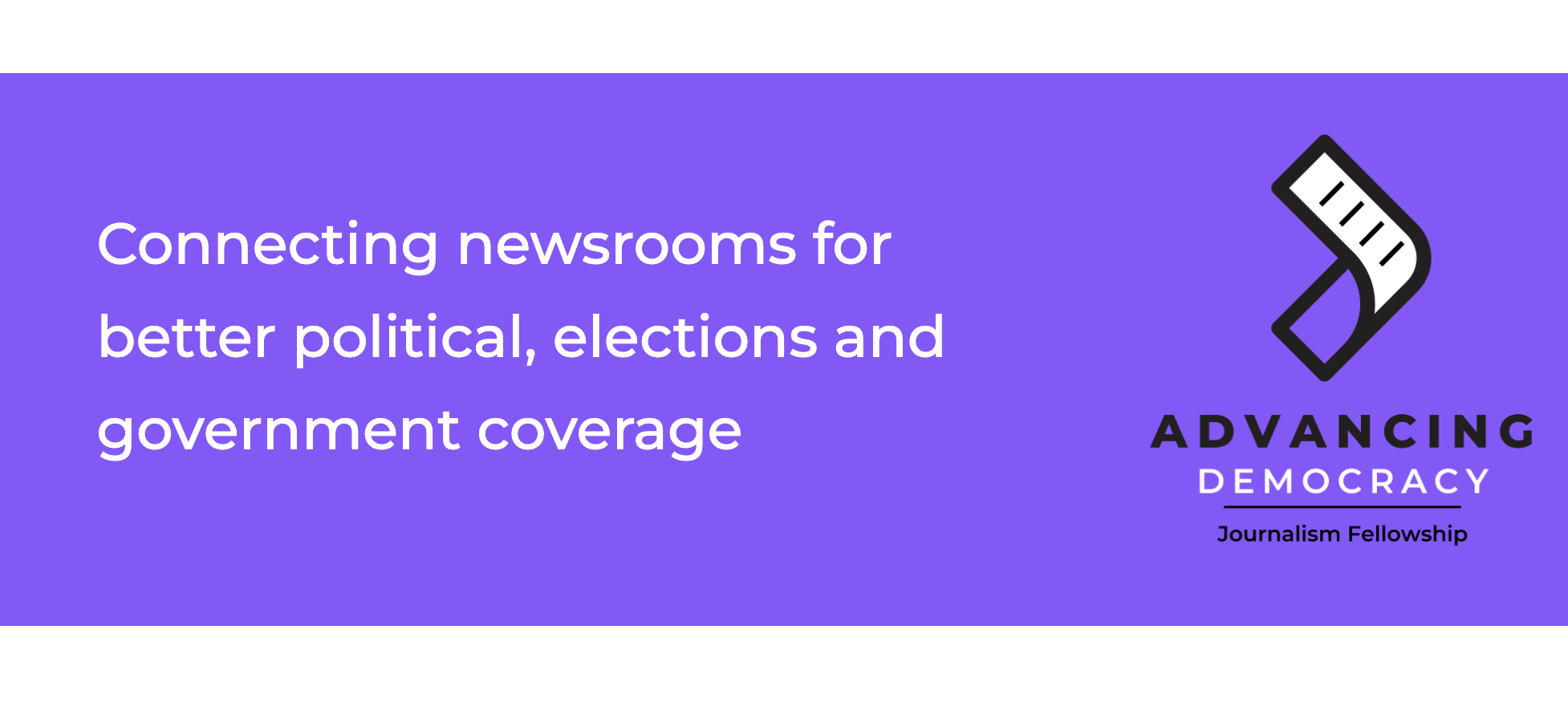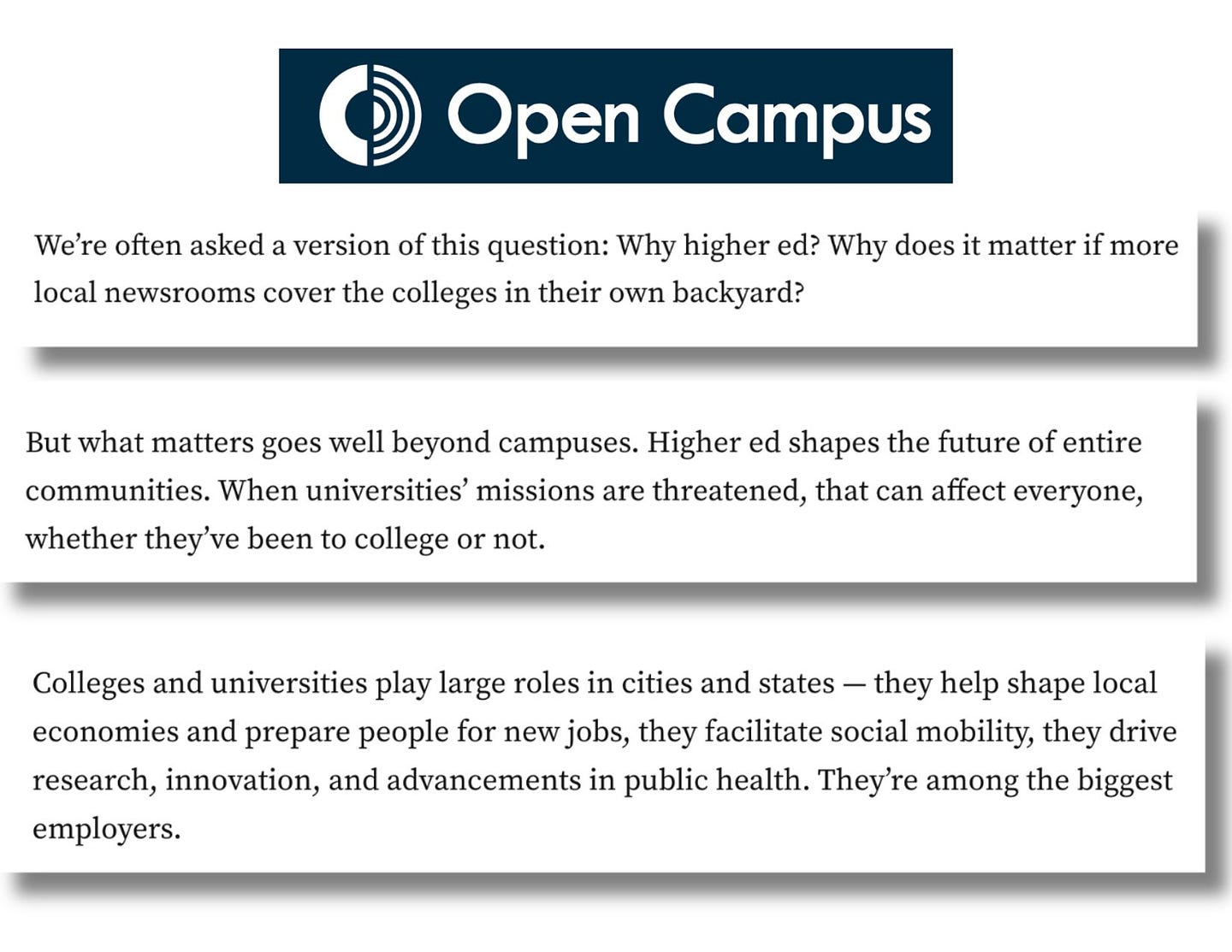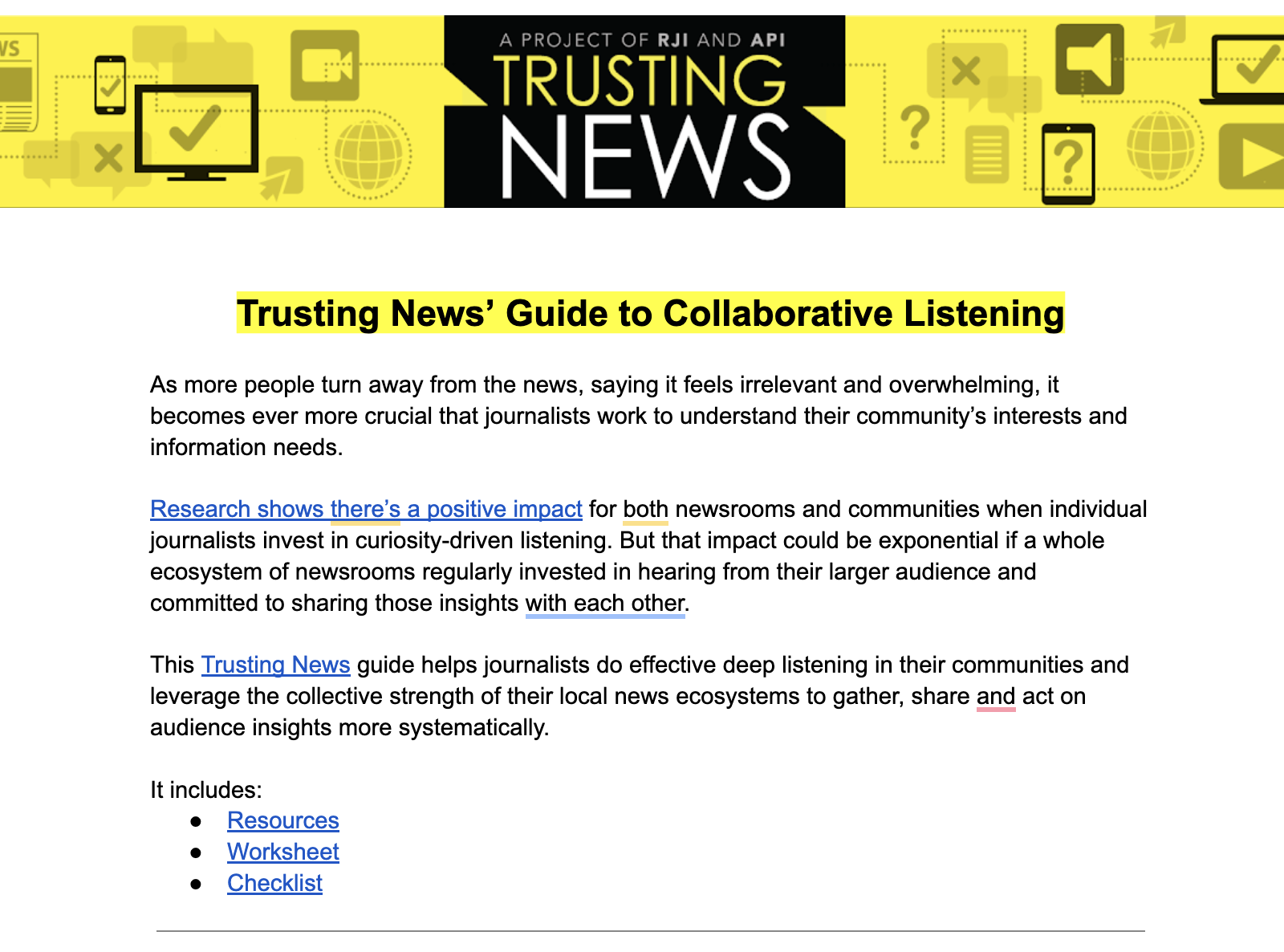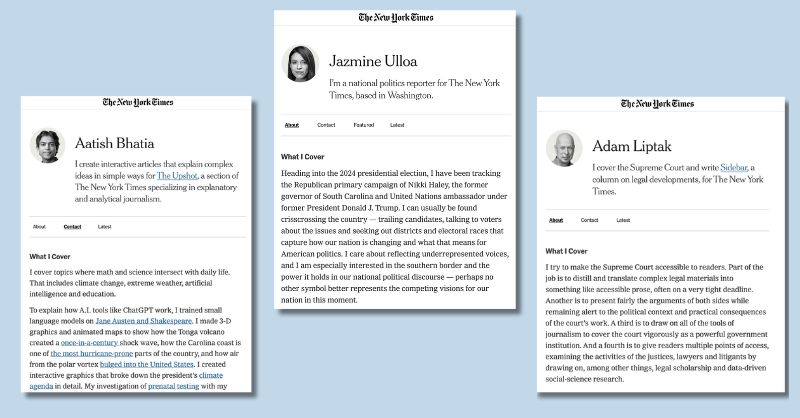
The New York Times is getting industry attention after announcing the rollout of their new staff bio pages, which they call “enhanced bios.” The accolades they are receiving are rightfully deserved: These bios do a great job of highlighting both the ethics and expertise of their journalists, as well as show the humanity and mission behind their […]
Replicate The NYT’s new staff bios with this guide
The New York Times is getting industry attention after announcing the rollout of their new staff bio pages, which they call “enhanced bios.” The accolades they are receiving are rightfully deserved: These bios do a great job of highlighting both the ethics and expertise of their journalists, as well as show the humanity and mission behind their work.
If you’re a regular follower or partner of Trusting News, you know staff bios and reporter mission statements are topics our team talks about A LOT. (We’ve even written about how the New York Times highlights staff experiences before.) With diminishing levels of public trust in news and the integrity of journalists regularly being called into question, staff bios and mission statements can be a foundational step to establishing credibility and building trust with your community.
That’s why in today’s newsletter, we wanted to offer a quick breakdown of how you can replicate these staff bios (no matter staff size or CMS limitations!).

4 steps to replicating the New York Times bios
“What I Cover”
Start by going beyond just stating your job title and explain what your role is and what your beat looks like. In these staff bios, Times reporters do this very well by simplifying what their job title actually means — without using any journalism jargon — and then add context around what their job typically looks like. They share what covering that beat entails, what kind of stories they are hoping to tell, and link to previous coverage. Check out this Trust Kit on explaining coverage for more tips on how to do this.
“My Background”
The Times staff share their background in two ways. First, they explain their background in the field — previous jobs, awards, and expertise related to what they cover. This information helps signal credibility to the public.
Second, staff talk about who they are as people. Connection plays a big role in how much empathy and trust we extend to one another. The Times staff leans on this by sharing bits about their non-journalism background — that one staffer previously served in the military or another worked in religious roles. Consider doing something similar by sharing parts of your life, personality, and connection to the place or work you’re doing. We have a whole Trust Kit that walks you through how you can do this, including considerations to take around potential privacy and safety concerns.
“Journalistic Ethics”
People don’t give journalists the benefit of the doubt, so they won’t assume you’re working on the side of the community or that you have ethics — unless you tell them. That’s why we especially love the bottom of these Times bios, where staffers share their own journalistic ethics and what drives their coverage. This is so important to building trust — it’s something we wish all journalists would do and then attach to their coverage. We have guides on how to write a reporter mission statement and how to get on the record about your ethics.
“Contact Me”
We know this last one seems so simple, but it is often so difficult to find contact information for reporters, or the newsroom in general. By simplifying offering up contact information — in this case, the Times staff list an email and sometimes social media profiles — you signal credibility, transparency, and that you’re open to hearing from your audience.
| >> RESOURCE: If you’re looking for more guidance on how to write a staff bio or reporter mission statement, check out this Trust Kit. It walks you through more specifics on how to create staff bios and reporter mission statements, and also how you can use them by attaching them to your daily coverage. And if you’re getting stuck or have questions, feel free to reach out to our team! |
Kudos for these additions
Here are a few other notable things the Times did with these staff bios.
- They talk publicly about AI. We appreciate that in the newsroom’s public announcement about this new product, they talked publicly about how AI is on the rise. It is becoming easier and easier for people to pretend to be someone they are not, or for people to look like they exist when they do not. A lot of this is possible through AI tools. Because of this, having information about who you are easily findable by news consumers and making it personal and human has never been more important.
- They show humility: It’s so refreshing when journalists share the humility around their work. We’re all human, we all mess up, and we’re striving to do better. In our work with journalists, we’ve found it often increases empathy and trust with the public when journalists are open about this and approach their work with humility. That’s why we particularly appreciated how Times’ graphics and multimedia editor Aatish Bhatia included this in their bio: “My training as a scientist has also taught me how difficult it is to know things with certainty. I strive to bring the same level of skepticism and scientific rigor to my work at The Upshot. I try to always question whether my findings make intuitive sense, cross-check them against other sources, think through what the data says and what it leaves out, and learn from my mistakes.
How other newsrooms are doing this
Yes, The New York Times bios are great! But, they aren’t the only newsroom doing this work. Here are some great examples of other newsroom staff bios and reporter mission statements.
- KPCC’s reporter mission statements share each reporter’s goals and how the public can offer feedback and ideas.
- Station KPCR’s reporter bios include information about the reporters’ credentials but also are fun in that they really showcase the journalists’ personalities with a variety of photos and personal information.
- Keene Sentinel had staff members do Instagram takeovers, showing what a day in their life looked like.
- This thread from reporter Rebecca Powell at The Coloradoan is a great example of how a reporter can share the focus and mission behind their beat.
| Find more examples of newsroom staff bios and mission statements in our Newsroom Example database here. |
We’d love to hear from you!
Our team would love to hear from you about how your newsroom is working to build trust and demonstrate credibility! Feel free to connect with us on LinkedIn, X (formerly Twitter) or by responding to this email.
At Trusting News, we learn how people decide what news to trust and turn that knowledge into actionable strategies for journalists. We train and empower journalists to take responsibility for demonstrating credibility and actively earning trust through transparency and engagement. Learn more about our work, vision and team. Subscribe to our Trust Tips newsletter. Follow us on Twitter and LinkedIn.
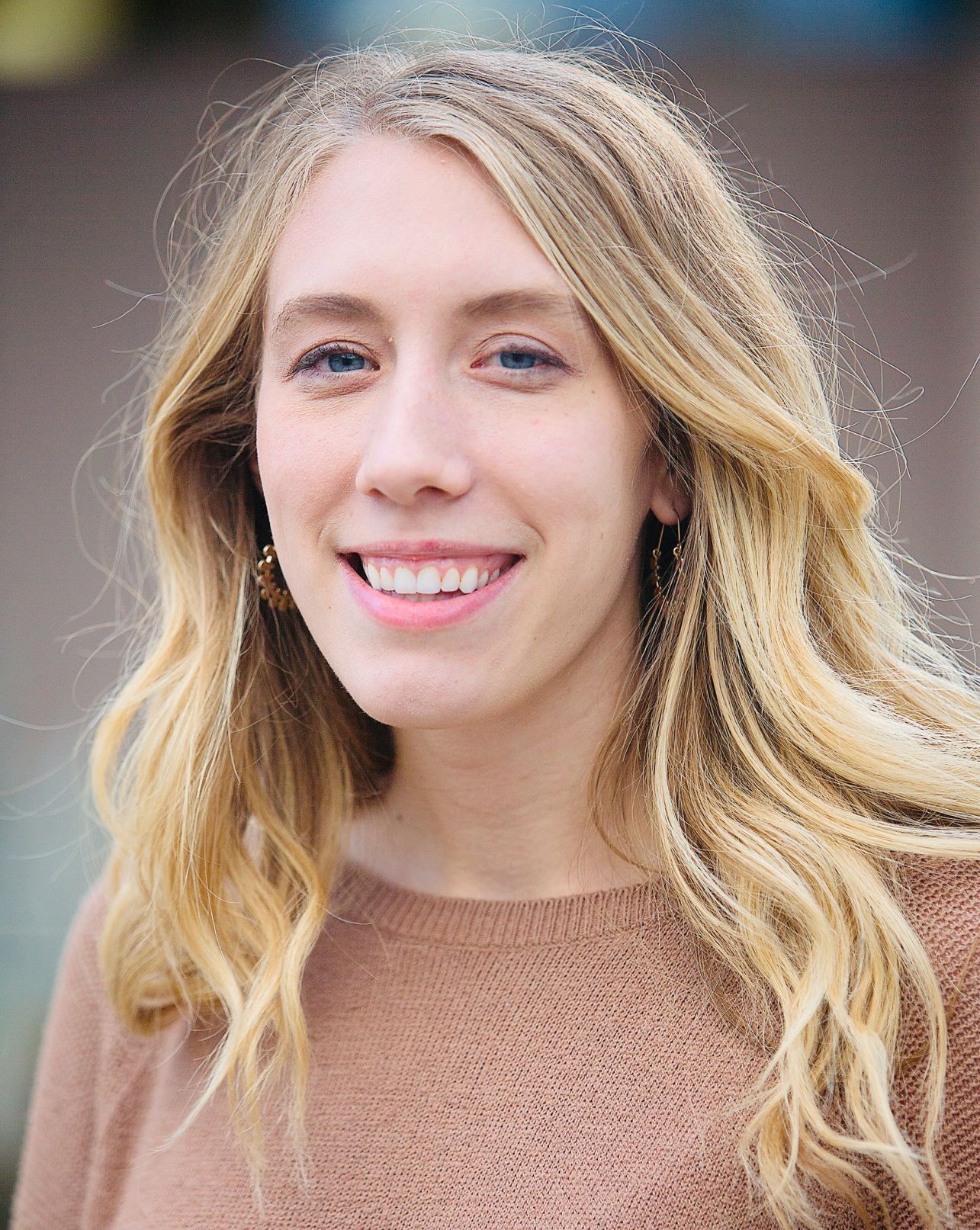
Project manager Mollie Muchna (she/her) has spent the last 10 years working in audience and engagement journalism in local newsrooms across the Southwest. She lives in Tucson, Arizona, where she is also an adjunct professor at the University of Arizona’s School of Journalism. She can be reached at mollie@trustingnews.org and on Twitter @molliemuchna.

